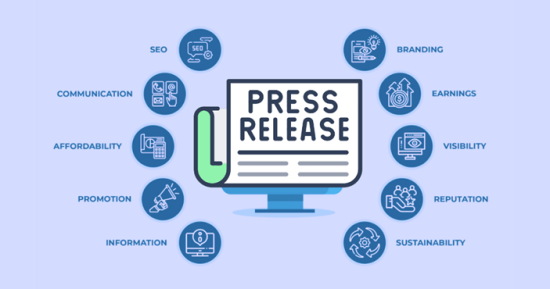
Have you ever wondered how you can make a difference and bring about change in the United States? Starting a petition is a powerful way to have your voice heard. This blog give you beginner’s idea and will walk you through each step of the process, from choosing the right topic to organizing efforts after the petition is delivered. By the end, you’ll have the knowledge and confidence to launch a compelling petition that resonates with people and garners support. Are you ready to make a difference? Let’s discover how to start a petition in the US!
How to Start a Petition in the US?
Choose Your Topic
When starting a petition, choosing a topic aligned with your values is crucial. It should resonate with you and be something you’re passionate about. Consider its impact on your community, state, or the nation to effectively communicate your message and generate support.

To select a petition topic, ask yourself the following questions:
- What issues do I care about the most? It’s important to choose a topic that you are truly passionate about and willing to put time and effort into advocating for.
- What change do I want to see? Be specific about the outcomes you hope to achieve through your petition.
- Is this topic relevant and timely? Consider whether there is a current need or urgency for action on this issue.
- Does this topic align with my values and beliefs? Ensure that the cause you choose is consistent with your personal convictions.
Write Your Headline
Craft a clear, concise headline for your petition that conveys urgency and importance. Use action words to motivate readers and highlight the benefits of supporting your cause. Appeal to emotions and keep the headline short, around 6-8 words, for impact and memorability. Include numbers or statistics for credibility and specificity, ensuring your headline effectively communicates your message and encourages others to join your cause.
Choose Your Decision Maker

Craft a compelling narrative for your petition by sharing personal experiences, examples, and anecdotes related to your cause to highlight its importance. Use storytelling to connect emotionally with your audience and make them understand why your issue matters. Utilize facts, statistics, and real-life stories to create urgency and explain the impact of the issue on individuals and communities. Show empathy and compassion to encourage others to take action in support of your cause.
When crafting your story, be sure to consider the following:
- Be authentic: Share your personal experiences or those of others that are tied to the cause. Authenticity lends credibility and helps establish a connection with your audience.
- Be specific: Provide details about the events, situations, or challenges faced by individuals impacted by the issue. This specificity helps paint a vivid picture and makes your story more relatable.
- Be concise: Keep your narrative focused and to the point. Capture the essence of your story in a succinct and impactful way.
- Be persuasive: Use your storytelling skills to convey a sense of urgency and the need for change. Provide compelling reasons why your audience should support your petition.
- Be diverse: Include stories from various perspectives to highlight the widespread impact of the issue. Show that your cause aligns with the experiences of many different individuals.
Choose an Image or Add a Video
Enhance your petition’s impact by including images or videos that represent your cause and evoke emotion. Choose visuals that capture attention and effectively communicate your message. A video can be particularly impactful, allowing you to tell your story, engage your audience, and provide a compelling call to action. Visuals can make your petition more engaging, memorable, and persuasive, ultimately attracting more support.
Collect Signatures
Now that you have crafted a compelling petition, it’s time to gather signatures and rally support for your cause. This crucial step determines the success of your petition and increases its impact.
Here are some effective methods to collect signatures for your petition:
- Online Platforms: Leverage the power of the internet and utilize online platforms dedicated to petitioning, such as Change.org or Petitions.WhiteHouse.gov. These platforms provide a wide reach and enable individuals across the United States to easily sign and support your cause.
- Social Media Campaigns: Harness the influence of social media platforms to spread awareness about your petition. Create engaging posts, share powerful visuals, and use hashtags related to your cause to reach a broader audience. Encourage your followers to sign and share your petition, amplifying its reach.
- Events: Organize events or rallies to gather signatures in person. Set up booths or tables at community gatherings, local fairs, or public spaces where you can interact with people directly. Engage in conversations, educate individuals about your cause, and provide the opportunity to sign your petition on the spot.
- Partnerships with Like-Minded Organizations: Collaborate with other organizations or groups that share similar goals or values. By partnering with them, you can tap into their existing networks and gain access to a broader audience. This collaboration can significantly increase the number of signatures collected for your petition.
As you collect signatures, it’s essential to promote your petition through various channels. Share regular updates on social media, post informative content related to your cause, and actively engage with potential supporters. Encourage your followers to share the petition with their networks, expanding its reach even further.
Deliver the Petition

Once you have gathered a significant number of signatures, it’s time to deliver your petition to the decision maker. Delivering a petition is a critical step in presenting your case and advocating for change.
You have several options for delivering your petition:
- Formal Meeting: Request a formal meeting with the decision maker or their representatives. This allows you to personally present your petition, discuss its importance, and answer any questions they may have. Be prepared with a clear and concise summary of your petition’s purpose, emphasizing the support it has garnered.
- Public Event: Organize a public event to present your petition. This can be an impactful way to raise awareness and gather media attention. Invite decision makers, community members, and supporters to attend the event, where you can formally present your petition and share the stories and experiences that inspired its creation.
- Online Submission: In today’s digital age, many decision makers accept petitions or public comments through online platforms. Check if the decision maker has an official website or online portal where you can submit your petition. Be sure to follow any instructions or guidelines provided for submission.
Regardless of the delivery method you choose, it’s essential to document the delivery process. Record the date, time, and details of the delivery, including the individuals involved and any interactions or responses received. This documentation can be useful for future reference or if you need to follow up on your petition.
Finally, remember to keep your supporters engaged and updated throughout the petition delivery process. Share updates on social media, through email newsletters, or on your website. Let your supporters know that their signatures and efforts are making a difference and that you are actively working towards achieving the goals of the petition.






